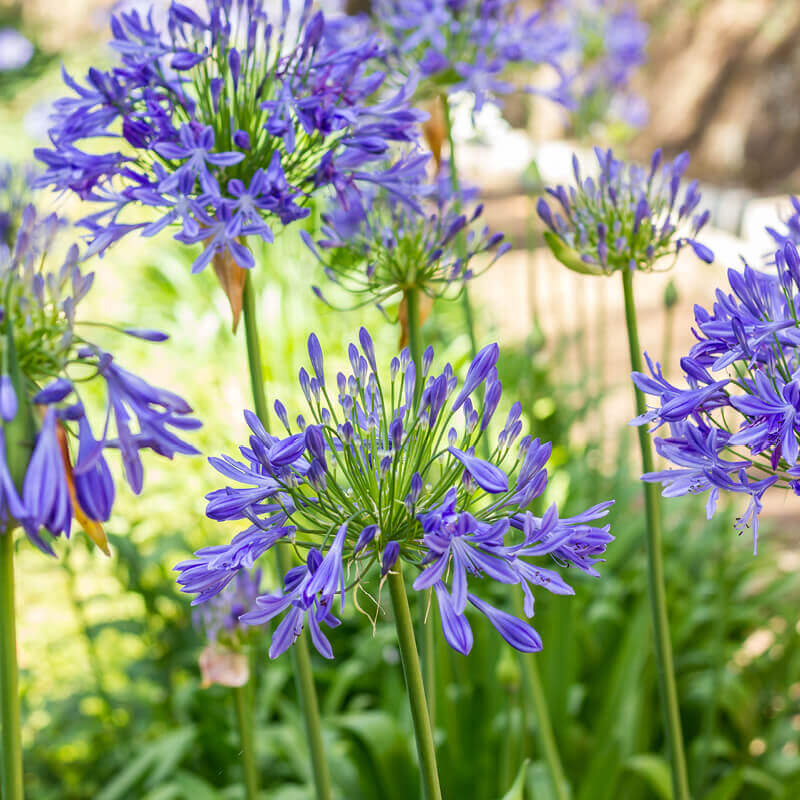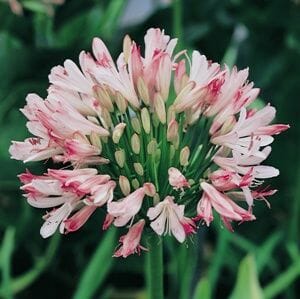Agapanthus Care Tips for Lush and Vibrant Flowers
Agapanthus Care Tips for Lush and Vibrant Flowers
Blog Article
Letting Loose the Secret to Successful Agapanthus Cultivation: Advice for a Flourishing Garden
In the world of horticulture, cultivating agapanthus successfully requires a critical technique that incorporates numerous elements of plant care. By comprehending the subtleties of agapanthus farming, one can develop an environment where these plants flourish and bloom generously.
Growing Agapanthus: Finest Practices
When growing Agapanthus, correct dirt preparation is necessary for making certain successful growth and development of these attractive flowers. Agapanthus, typically known as Lily of the Nile or African lily, grows in well-draining soil with a somewhat acidic to neutral pH degree - Agapanthus. Prior to growing, it is important to modify heavy clay soils with raw material such as compost or peat moss to improve drain and give crucial nutrients for the plants
To plant Agapanthus, select an area that receives complete sunshine to partial shade, as this will advertise healthy and balanced development and abundant blooming. Dig an opening twice the size of the plant's origin ball and put the Agapanthus at the same depth it was previously expanding. Gently backfill the opening with soil, pressing down strongly to remove any kind of air pockets around the roots.
Water the recently grown Agapanthus thoroughly and continue to maintain the dirt evenly damp, particularly during the plant's active growing season. Agapanthus. Using a well balanced fertilizer once a month can additionally sustain the plant's growth and flowering. By complying with these ideal techniques for growing Agapanthus, you can create a stunning display screen of these captivating blossoms in your garden
Perfect Dirt Issues for Agapanthus
For ideal development and growing success of Agapanthus plants, making sure the soil problems are optimal is crucial. Agapanthus favors dirt that is rich in nutrients, so including a balanced plant food during the expanding period can advertise healthy development and vivid blossoms.

Watering and Fertilizing Tips
To make certain healthy growth and vibrant flowers, appropriate watering and feeding techniques are important for successful Agapanthus growing. Agapanthus plants benefit from regular watering, especially during the expanding season.
When it involves fertilizing Agapanthus, a balanced fertilizer with equivalent components nitrogen, phosphorus, and potassium can be applied in the spring to promote healthy growth and blooming. Slow-release plant foods are suitable for offering nutrients slowly over an extensive duration. Prevent over-fertilizing, as this can cause too much foliage growth at the expense of blooms.
Furthermore, integrating natural matter like compost into the dirt can improve nutrient levels and boost soil framework, aiding in the total health and wellness of the Agapanthus plants. By following these watering and fertilizing pointers, gardeners can guarantee their Agapanthus plants grow and generate magnificent display screens of flowers.
Pruning and Deadheading Strategies
Appropriate trimming and deadheading methods play a vital role in keeping the health and wellness and aesthetic appeals of Agapanthus plants, complementing the important methods of watering and fertilizing for successful growing. Pruning Agapanthus entails removing spent blossom heads, yellowing or dead leaves, and total shaping of the my company plant to promote far better growth. Deadheading, the procedure of removing faded blossoms, not just enhances the plant's appearance yet likewise motivates more blooming.
When deadheading Agapanthus, it is advisable to clip off the blossom stem at the base using sharp, clean shears. This procedure reroutes the plant's power from seed production back into root and vegetation development, advertising a much healthier and more robust plant. Routine deadheading can extend the flowering period of Agapanthus and avoid self-seeding, which can lead to congestion.
In regards to trimming, Agapanthus generally benefits from a light trim after blossoming to clean up the plant and urge fresh development. Reducing back the invested flower stems and removing any dead or damaged foliage aids keep site here the plant's vitality and general appearance. Nevertheless, it is important to prevent reducing into the crown of the plant, as this can damage its health and wellness.

Protecting Agapanthus From Vermins and Diseases
Carrying out effective bug and illness administration strategies is important to safeguarding the health and vitality of Agapanthus plants in growing. Agapanthus are generally durable plants, yet they can still succumb numerous pests and diseases otherwise properly cared for. One usual bug that affects Agapanthus is the Agapanthus borer, a caterpillar that tunnels right into the plant, causing damage to the fallen leaves and flowers. To avoid infestations, normal inspection of the plants is vital. If borers are discovered, they can be by hand removed, or insecticidal soap can be made use of as a control action.
Along with bugs, Agapanthus are susceptible to illness such as origin rot and fungal leaf spots. These problems can typically be protected against by guaranteeing appropriate water drainage and preventing overwatering. If indications of illness appear, affected parts of the plant ought to be immediately gotten rid of to stop more spread. Fungicides might likewise be made use of as a therapy action, adhering to the manufacturer's instructions carefully. By staying watchful and attending to bug and disease issues quickly, gardeners can help their Agapanthus thrive and flourish.

Final Thought
Finally, effective cultivation of agapanthus requires proper growing strategies, perfect dirt conditions, appropriate watering and feeding, regular pruning and deadheading, and defense from insects and illness. By complying with these tricks and ideas, garden enthusiasts can make certain a flourishing garden filled up with beautiful agapanthus flowers. Agapanthus. Keep in mind to keep regular care and attention to detail his response to promote the health and wellness and long life of these stunning plants
When planting Agapanthus, appropriate dirt preparation is essential for guaranteeing effective development and growth of these lovely blossoms.Water the newly planted Agapanthus extensively and continue to keep the soil equally damp, particularly throughout the plant's active growing season.For optimal growth and blooming success of Agapanthus plants, ensuring the dirt conditions are ideal is essential. When hair transplanting or planting Agapanthus, ensure the dirt is well-prepared to give the essential structure for the plants to establish themselves successfully. One common pest that impacts Agapanthus is the Agapanthus borer, a caterpillar that tunnels right into the plant, triggering damage to the fallen leaves and blossoms.
Report this page